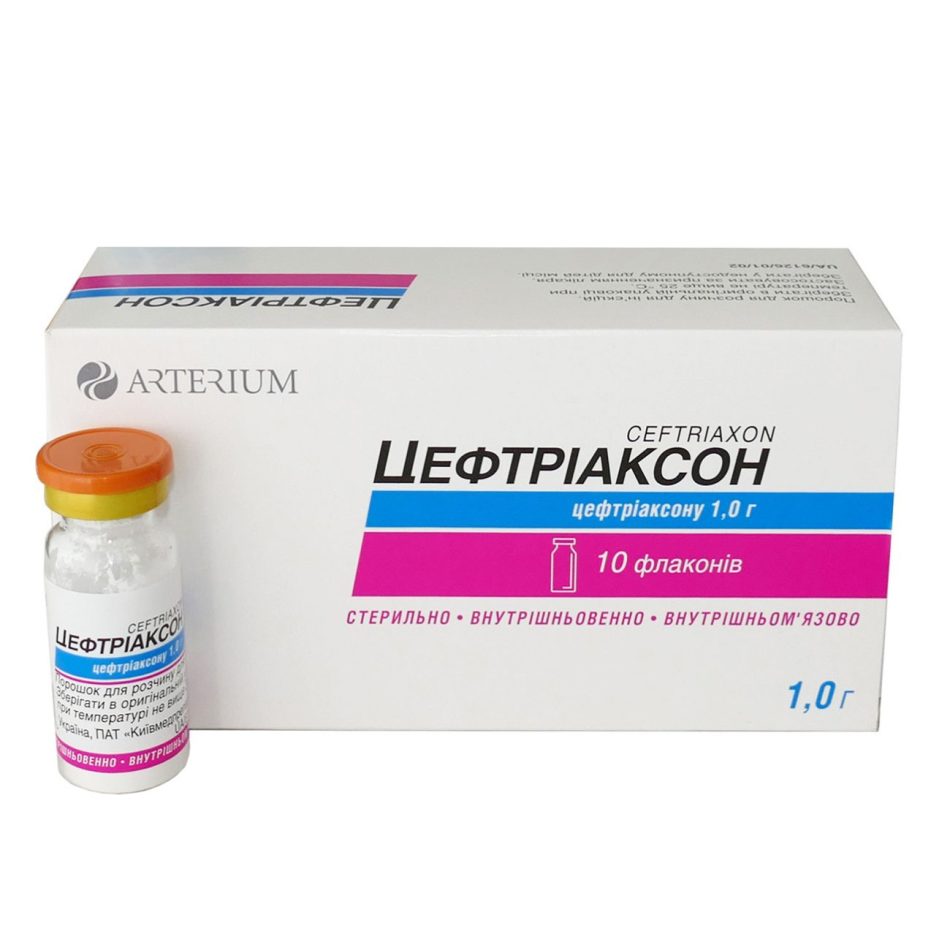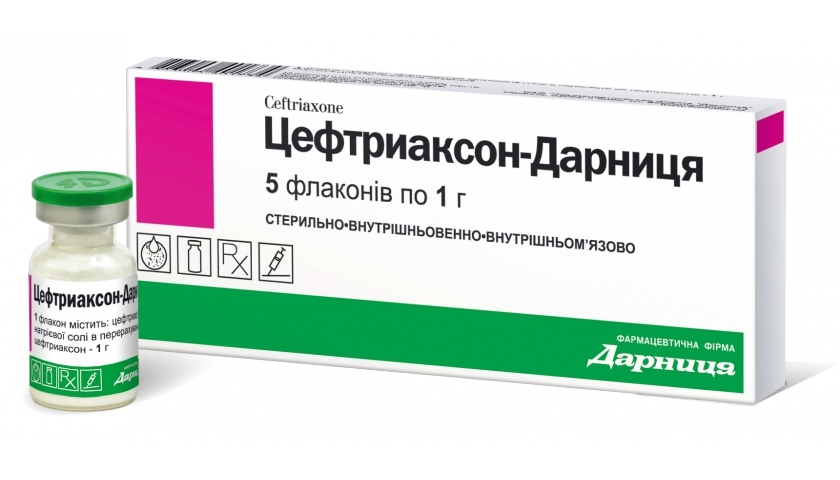From the information below, you will learn how to properly use the drug Ceftriaxone.
Content
- Clinical effectiveness of ceftriaxone
- Method of use and dosage of ceftriaxone
- Warning when taking ceftriaxone
- Pregnancy and lactation while taking ceftriaxone
- Ceftriaxone: interaction with other drugs
- Contraindications for taking ceftriaxone
- Side effects of ceftriaxone
- Video: Dilute Ceftriaxone Lidocaine 2%
Ceftriaxone, active ingredient-beta-lactam antibiotic, belonging to the category of third-generation cephalosporin. It is characterized by a wide range of action, both on gram -positive and gram -negative bacteria, even when they are resistant to antibiotic therapy.
Bactericidal activity is expressed through the inhibiting of transpeptidase - an enzyme involved in the formation of stitching between peptidoglycans molecules and in the structure of the bacterial wall, which determines the lysis of microorganisms and osmotic shock.
Clinical effectiveness of ceftriaxone
Belonging to the methoxymin group, gives Ceftriaxone natural resistance to bacterial beta-lactamases, its antibiotic activity remains, also for species resistant to penicillin.
Staphylococci, streptococci, E. coli, hemophilic infection, Klebsiella, Proteus of bacteria, Neisseria and enterobacteria - microorganisms, over which effectiveness is proved in a tube and in natural conditions.
The impossibility of absorption of ceftriaxone through the gastrointestinal tract makes it necessary to take the drug intramuscularly or intravenously, which allows maintaining very high bioavailability and prolonged therapeutic effect for about 8 hours.

The results of the analysis of the effect of the drug demonstrated high effectiveness and safety of ceftriaxone, taken in the daily doses of 250 mg in the treatment of gonorrhea, even in patients with complications.
The study of 116 patients with syphilis, 80% of HIV - positive, confirms that the use of the drug is effective in the treatment of primary syphilis, and in some cases, also secondary neurological and ophthalmological syphilis.
A pharmacological study aimed at determining the optimal dosage of ceftriaxon in small patients showed not very good results. Unfortunately, potential side effects greatly limit the use of this antibiotic, although it is especially effective in neonatal therapy.
Method of use and dosage of ceftriaxone
- Powder and solvent for ceftriaxone 250 mg for 2 ml of solution.
- Powder and solvent for ceftriaxone 500 mg for 2 ml of solution.
- Powder and solvent for ceftriaxone 1 g for 3.5 ml of solution.
Although the standard dose for adults requires 1 g of ceftriaxone per day, the doctor must determine the suitable therapeutic scheme based on the physical and pathological characteristics of the patient, the severity of the clinical situation and therapeutic goals to achieve.
Adaptation of doses used is necessary for pediatric and geriatric (elderly) patients, or suffering from kidney diseases. Before taking ceftriaxone, it would be advisable to carefully check the chemical and physical properties of the drug, avoiding its use in the presence of precipitation.

Ceftriaxone is prescribed by the doctor in the form of injections directly into the muscle, or intravenously dropped. The drug will not be administered simultaneously with injections containing calcium.
- Adults and children aged 12 years and with a body weight of more than 50 kg: 1 - 2 g once a day in accordance with the severity and type of infection. In severe infections, an increased dose is prescribed (up to 4 g per day). The daily dose is above 2 g, it is possible to divide for administration twice a day.
- Children from 15 to 12 years old with a weight of less than 50 kg: 50-80 mg of ceftriaxone for each kilogram of body weight, depending on the severity and type of infection, uneven. With severe infection, an increased dose of up to 100 mg per kg of body weight is prescribed.
- Infants (up to two weeks): 20-50 mg of ceftriaxone for each kilogram of body weight of the newborn, depending on the severity and type of infection. The maximum daily dose cannot exceed 50 mg per kg of body weight of the child.
- Patients with liver and kidney problems are prescribed a dose that is different from the usual. The doctor will decide how much Ceftriaxone needs, and keeps under close supervision, in accordance with the severity of the liver and kidneys.
Warning when taking ceftriaxone
Given the potential side effects and selectivity of therapeutic indications provided for use, it would be advisable for the doctor to carefully assess the patient's health, making sure:
- In the absence of previous reactions of supersensitivity to antibiotics and lidocaine.
- In the absence of conditions incompatible with therapy with ceftriaxone.
- In the correctness of the prescription.
- In the analysis of renal and liver functions.
In addition, periodic monitoring of the patient’s health status is necessary to avoid the possible occurrence of adverse reactions.
In this regard, the patient must immediately inform his doctor, after any undesirable effects occur and consider the suspension of therapy.

Long -term antibiotic therapy, over time, in addition to stimulating the occurrence of resistant microbial strains, can seriously change the intestinal microflora, contributing to the occurrence of adverse consequences and violating the absorption of other active ingredients.
If ceftriaxone is used for a long period, a systematic blood test may be needed. An antibiotic can affect the results of urine tests associated with sugar, and a blood test, known as the Cumbs test. It is important to consider the issue of reducing the effectiveness of contraception of oral contraceptives taken during antibacterial therapy.
Pregnancy and lactation while taking ceftriaxone
Ceftriaxone during pregnancy and the next period of breastfeeding should be prescribed with particular caution, and only in cases where it is therapeutically necessary.
These restrictions are justified by the lack of studies that can characterize the safety of this antibiotic for the health of the fetus.
Ceftriaxone: interaction with other drugs
To avoid unpleasant side effects, sometimes even clinically significant, it would be advisable to avoid dissolution of the powder using calcium -containing solvents, given the high tendency to the formation of precipitation.
Studies have shown the synergistic effect between aminoglycosides and ceftriaxone, in combating bacterial growth, although they cannot be administered simultaneously due to physical incompatibility.
Contraindications for taking ceftriaxone
The use is contraindicated in patients with increased sensitivity to penicillin and cephalosporin or related excipients. You can not use premature children and infants under the age of 4 weeks, as well as patients with jaundice or hyperbilirubinemia.

The presence of lidocaine used as a solvent and analgesic for intramuscular use, expands the above contraindications to patients that are hypersensitative to lidocaine.
Side effects of ceftriaxone
Various clinical trials and careful monitoring made it possible to evaluate all possible side effects associated with the treatment of cephalosporin.
In addition to local reactions characterized by edema, pain, redness and itching, ceftriaxone can cause adverse reactions to manifest:
- Nausea, vomiting, diarrhea and widespread abdominal pain.
- Dermal rash, urticaria and dermatitis.
- Headache and dizziness.
- Systemic leukopenia, thrombocytosis, anemia, and hyperbilirubinemia.

A particularly serious reaction, from a clinical point of view, can also lead to bronchospasm, laryngospasm, hypotension and anaphylactic shock.
Ceftriaxone can provoke dizziness. Do not drive or use any tools or cars if such symptoms appear. If you feel dizziness, see a doctor immediately.
Ceftriaxone must be saved in an inaccessible place for children. Do not use a medicine with an expired shelf life. The drug does not require special storage conditions.







